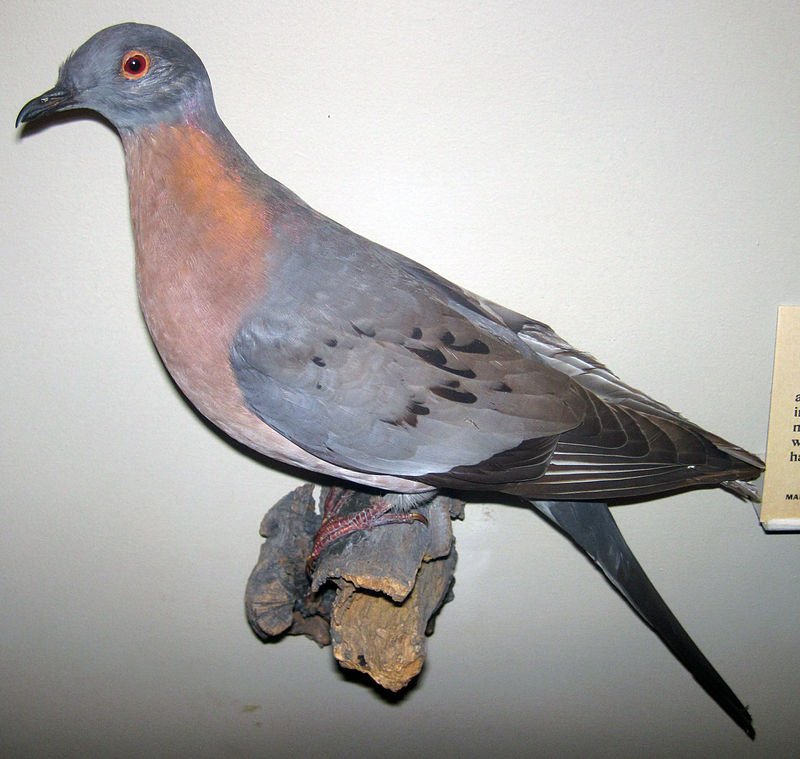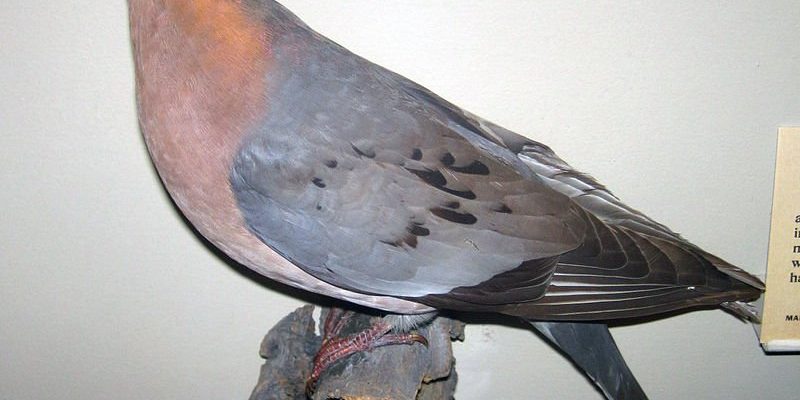
The passenger pigeon is a reminder that even the most common species can vanish overnight. Imagine living in a world where these birds darkened the sky in their flocks, only to disappear within a century due to overhunting and habitat loss. It’s not just a tale of wildlife; it’s a wake-up call about conservation and our role in protecting the planet. So, let’s dive into some captivating facts about the passenger pigeon that you might not know!
1. Once Counted in Billions
You might be surprised to learn that at one point, there were an estimated 3 to 5 billion passenger pigeons in North America. That’s an astronomical number! Their flocks were so large that they could block out the sun. Imagine standing under a sky darkened by countless birds—what a breathtaking sight! These massive gatherings created a stunning natural phenomenon, with reports of flocks that could take hours to pass over.
Hunting and habitat destruction led to their sharp decline. People often hunted passenger pigeons for meat, thinking they were an endless resource. Here’s the thing: they were an important part of the ecosystem, and their rapid disappearance highlighted how fragile nature can be.
2. A Social Bird
Passenger pigeons were incredibly social creatures. They lived in vast colonies, which could include thousands of nesting pairs. This social structure was key to their survival. Nesting in large groups provided safety in numbers; predators were overwhelmed by the sheer volume of birds. You could say they had a built-in defense mechanism.
Their social behavior didn’t just stop at nesting. They communicated through various calls and displays, helping maintain cohesion within the flock. Honestly, if you were a passenger pigeon, you’d never feel lonely. Their interactions were lively and essential for breeding and nurturing their young.
3. The Role of the Male and Female
Both male and female passenger pigeons were involved in raising their chicks. The female would lay one egg at a time, and both parents would share the responsibility of feeding the hatchlings. They produced a unique substance known as “pigeon milk,” made from the lining of their crop, rich in nutrients. You can picture these devoted parents working together, side by side, nurturing their young.
This level of parental investment is quite fascinating! In many bird species, one parent does most of the work, but passenger pigeons were a team. This could be why their population thrived for so long—strong family units equal healthy offspring.
4. Unbelievable Speed
Passenger pigeons were incredibly fast flyers. They could reach speeds of up to 60 miles per hour! This speed was crucial for evading predators and escaping danger. Think about how exhilarating it must have been to soar through the air, wings flapping with purpose. They were built for long flights, covering vast distances as they migrated between nesting grounds and feeding areas.
This speed not only allowed them to escape threats but also helped them find new food sources. Their ability to travel long distances in search of food was a vital part of their survival strategy in the wild.
5. The Last Known Passenger Pigeon
The story of the passenger pigeon takes a heartbreaking turn with the tale of Martha, the last known passenger pigeon, who died in captivity in 1914. She lived at the Cincinnati Zoo, and her death marked the end of an era. Imagine being the last of your kind; it’s a haunting thought. When Martha passed, it symbolized not just the end of her species but a failure to protect nature’s treasures.
Martha’s death sparked conversations about extinction and conservation, highlighting how human actions can lead to irreversible changes in the environment. It serves as a reminder that we need to learn from the past so we don’t repeat the same mistakes.
6. Impact on Ecosystems
The passenger pigeon played a significant role in its ecosystem. As they fed on seeds, berries, and fruits, they contributed to the dispersal of these plants. By consuming large amounts, they helped maintain the balance of various ecosystems. You might be wondering, what happens when a keystone species disappears? Well, it can lead to overgrowth of certain plants and impact other wildlife that relies on a balanced habitat.
Their absence has left an ecological void that is tough to fill. For instance, since their extinction, other species that once thrived alongside them have had to adapt or face their own threats. It’s a complex web of life where every thread matters.
7. Misunderstood Nature
Passenger pigeons were often misunderstood as mere game birds, with little regard for their ecological significance. Farmers and hunters viewed them as pests, primarily because their large flocks could devastate crops. Unfortunately, this perception led to intensive hunting and ultimately, their downfall.
You might think, why didn’t anyone see this coming? The sheer number of pigeons gave people a false sense of security. They believed they could never truly disappear. It turns out that this misconception had dire consequences.
8. Lessons in Conservation
The extinction of the passenger pigeon has become a powerful lesson in conservation. It teaches us about the importance of sustainable practices and protecting wildlife. Conservationists now refer to the passenger pigeon as a cautionary tale, highlighting the importance of preserving biodiversity.
This story pushes us to reflect on our choices. For instance, how we manage hunting, land use, and species protection can all influence the future of various wildlife. We can’t help but think about our impact on today’s species. Are we learning from history?
9. Cultural Impact
The passenger pigeon has left an indelible mark on culture and literature. Their story has inspired countless articles, books, and documentaries. Writers use the tragedy of the passenger pigeon to evoke emotions and push for environmental change. It’s become a symbol of what we stand to lose if we ignore conservation efforts.
Additionally, many Native American tribes revered the passenger pigeon, weaving their existence into stories and traditions. This connection reminds us of the deep respect many cultures have for nature.
10. Scientific Studies and Revival Efforts
Finally, interestingly enough, there are scientific discussions around possibly reviving the passenger pigeon through advanced technology, like genetic engineering. Scientists are exploring methods to bring back extinct species, sparking debates about the ethics and feasibility of such actions. But here’s the thing: even if we could bring them back, can we recreate their natural habitat?
The idea of de-extinction raises many questions. Would their reintroduction benefit ecosystems? Or would it create new challenges? The more we discuss it, the more we understand the intricate balance of the natural world.
In conclusion, the story of the passenger pigeon is not just about a lost species; it’s about understanding our relationship with nature. We’ve seen how their remarkable lives, unfortunate extinction, and the lessons learned are intertwined with the health of our environment. As we move forward, let’s carry these lessons with us to ensure that no other species ends up like the passenger pigeon. The past doesn’t have to dictate our future—let’s choose wisely.

